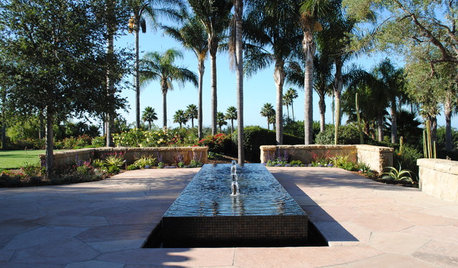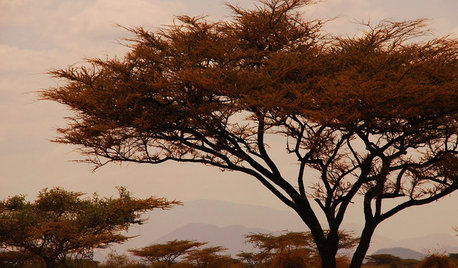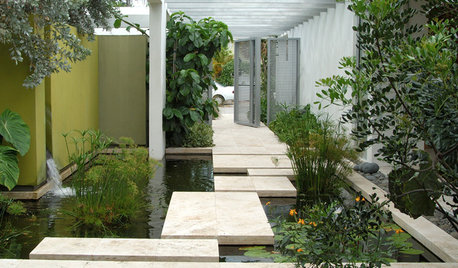Tap roots
cath41
14 years ago
Related Stories

GARDENING AND LANDSCAPINGGardens Tap Into Rill Water Features
Rooted in ancient design, this water feature is popular again as a way to help contemporary landscapes flow
Full Story
LIFETracing the Deep Roots of Design
Are our design choices hardwired? Consider the lasting appeal of forms from the hunter-gatherer life
Full Story
STORAGETap Into Stud Space for More Wall Storage
It’s recess time. Look to hidden wall space to build a nook that’s both practical and appealing to the eye
Full Story
KITCHEN DESIGNTap Into 8 Easy Kitchen Sink Updates
Send dishwashing drudgery down the drain with these ideas for revitalizing the area around your kitchen sink
Full Story
ECLECTIC HOMESMy Houzz: A Cottage With Cozy Charm and Show Biz Treasures
A Melbourne, Australia, home displays its owner’s theatrical roots and eclectic style
Full Story
EVENTSIn Connecticut, a Midcentury Legacy Evolves for Modern Times
A May house tour taps into New Canaan’s rich repository of modernist homes and contemporary designs
Full Story
LANDSCAPE DESIGN8 Modern-Day Moats That Float Our Boats
See how a simple water barrier with ancient roots can make for an eye-catching contemporary garden feature
Full Story
GARDENING GUIDESWhen and How to Plant a Tree, and Why You Should
Trees add beauty while benefiting the environment. Learn the right way to plant one
Full Story
GARDENING GUIDESThe Art of Green Mulch
You can design a natural garden that doesn’t rely on covering your soil with wood and bark mulch
Full Story
EDIBLE GARDENSNatural Ways to Get Rid of Weeds in Your Garden
Use these techniques to help prevent the spread of weeds and to learn about your soil
Full StorySponsored
Your Custom Bath Designers & Remodelers in Columbus I 10X Best Houzz
More Discussions






tapla (mid-Michigan, USDA z5b-6a)
cath41Original Author
Related Professionals
Maple Heights Landscape Architects & Landscape Designers · Jackson Landscape Contractors · Avocado Heights Landscape Contractors · Arden-Arcade Landscape Contractors · Paso Robles Landscape Contractors · West Orange Landscape Contractors · Crowley Landscape Contractors · Solana Beach Decks, Patios & Outdoor Enclosures · Vandalia Decks, Patios & Outdoor Enclosures · Phoenix Fence Contractors · Hayward Fence Contractors · Palo Alto Fence Contractors · Paramount Fence Contractors · Pennsauken Fence Contractors · Prior Lake Fence Contractorstapla (mid-Michigan, USDA z5b-6a)
cath41Original Author
botanicalbill
tapla (mid-Michigan, USDA z5b-6a)
cath41Original Author